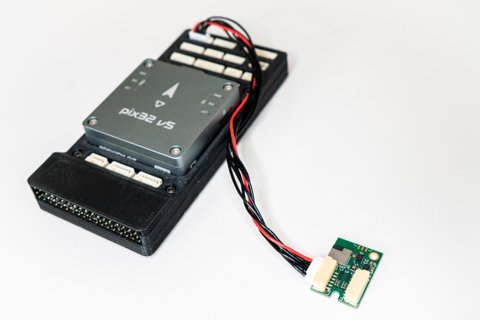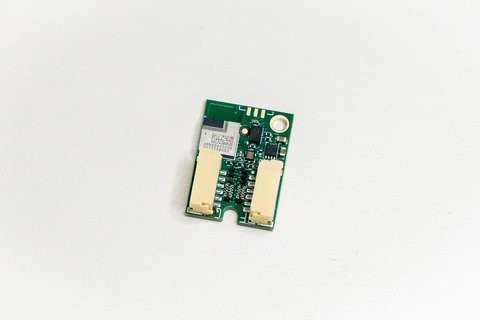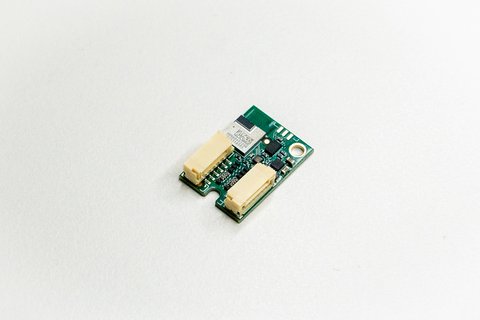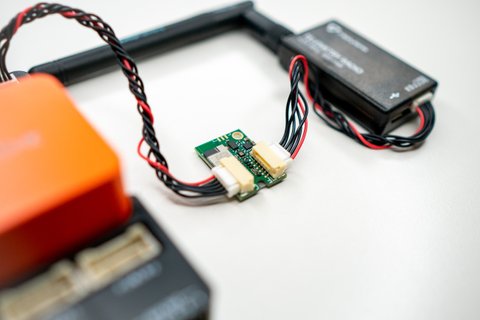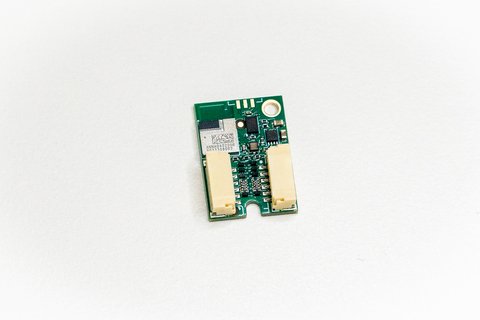Dronetag DRI
Smallest Module for Direct / Broadcast Remote ID
49 €Get now
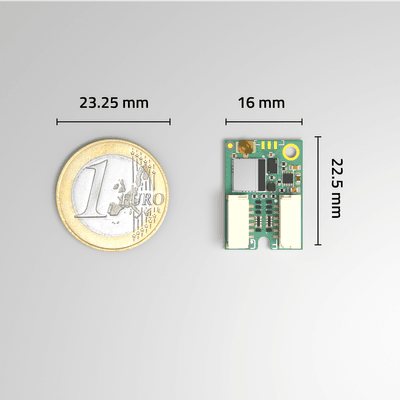
Drone Remote Identification
New regulations in EU & US regions mandate manufacturers to equip their new drone models with technology for Direct / Broadcast remote identification (RID). Dronetag DRI is the easiest way to acquire RID technology without years of R&D and product testing. Connect our factory-ready modules to your drone’s flight controller. That’s all it takes.
Supported regions
European Union
ASD-STANUSA
ASTMWorldwide compliance
Looking for add-on devices that make older drone operators compliant in the EU and US airspace?

Plug & Play for Pixhawk Cube or Similar
You only need one cable to add Remote ID to your aircraft. Dronetag DRI is compatible with all standard Pixhawk controllers running PX4 or Ardupilot. Plug it into your TELEM port, configure the appropriate baud rate, and you are ready to fly.
Not using MAVlink, PX4 or Ardupilot FCs? Having custom firmware? No problem; we can customize our solution to your needs.
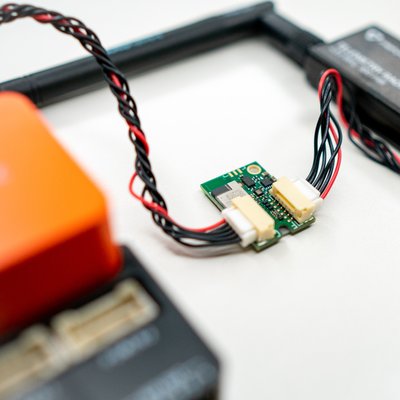
Sophisticated UART Bypass / Forwarding
All your TELEM / serial ports already occupied and you don't want to mess with the CAN setup and configuration? No worries, we got your back! Dronetag DRI will not take away any of your existing ports. Thanks to our UART forwarding feature, you can integrate it between the flight controller and your serial peripheral. Just enable port forwarding in Dronetag App and connect Dronetag DRI between your flight controller and serial peripheral.
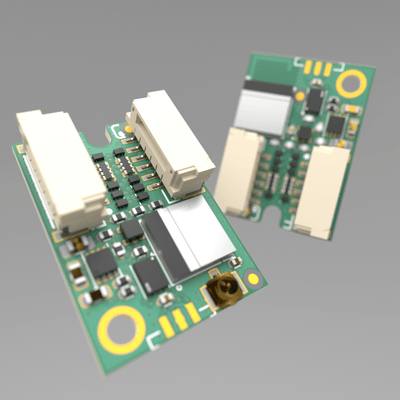
Two Variations Suit Every Application
Having tight space inside your aircraft? Or do you just want to enjoy the ease of integration using internal antennas? We produce two variants of Dronetag DRI; one that comes with a U.FL connector for an external antenna and the second with an internal antenna already on board.
If you integrate DRI into carbon fiber aircraft, the U.FL variant will provide the flexibility for best performance. The internal variant will get you all you need for any outside mounting options on plastic.
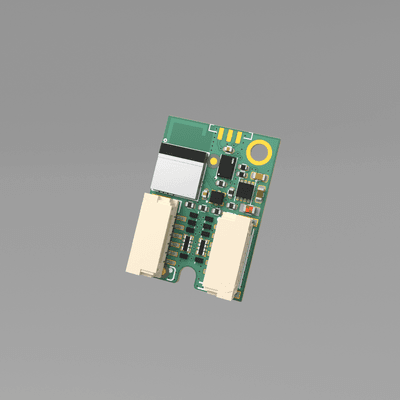
Premium Support Throughout the Compliance Process
With our modules, we offer full support throughout the approval process at your local authority. We are ready to help you with the Remote ID compliance process at FAA or assist you during C-class certification. With our OEM solution, you are on a frictionless path toward the production launch of Standard Remote ID (US) and C-class (EU) drones.
“Dronetag module is a shortcut toward the Remote ID future for all manufacturers. We spent four years on R&D that you can now plug and play.”
Lukas Brchl, CEO at Dronetag
Available on all devices
Dronetag App is complementary free-to-use app where users can manage their drones and Remote ID devices. It comes with additonal features such as airspace zones, flight plans, nearby drone scanning, and notifications about any airspace hazards.
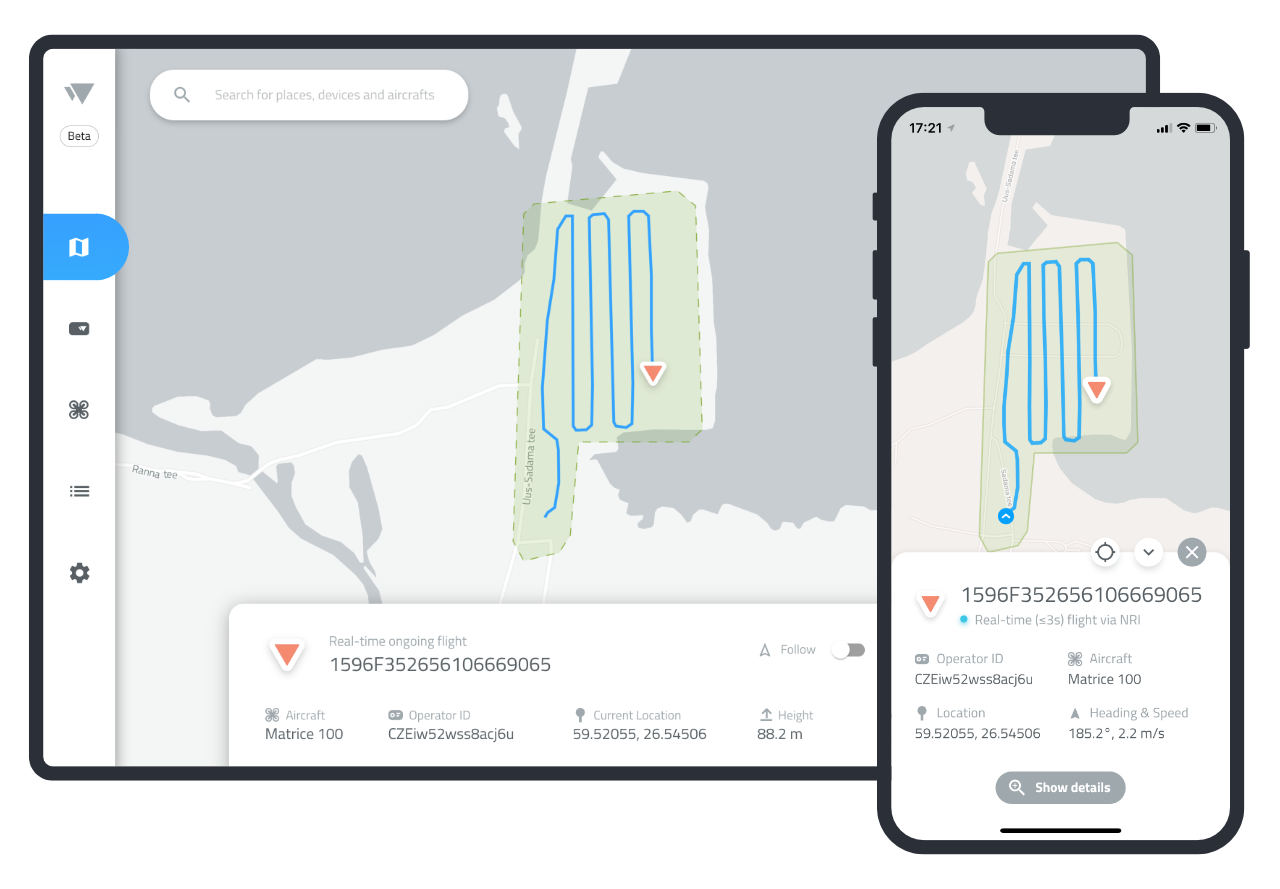
Features
Flexible Mounting
Dronetag DRI is a small single-sided board, so you can either use double-sided tape or M2 screws to mount it in the desired place.Device Management via Mobile App
Forgot about disassembling your aircraft to change the settings or update the firmware. Take care of everything in our multiplatform mobile app.OTA Firmware Updates
Guarantees long-term support and future-proof solutions. New exciting features are always waiting at your fingertips.No Sensors & Battery
Module takes position data and power from your FC. Minimal impact on drones’ SWAP characteristics as the DRI module weighs 1.5 g with a size of 22.5 × 16 mm.Comes with Standardized SN
Our DRI module already has ANSI/CTA-2063-A serial number baked inside. Refer to this SN during the compliance process without worries about managing your sequence.ASD-STAN EN 4709-002 & ASTM F3411-22 compliant
Suitable for all regions adopting any of those standards. Broadcast over Bluetooth 4 & 5 to up to 3 km range (distance drone to smartphone).Upload Flight Logs Online
Dronetag DRI has external flash memory, which allows pilots to synchronize their flights with Dronetag App.Download Pixhawk Dataflash Logs
Troubleshooting customer‘s problem over a long distance? Let them wirelessly download diagnostic dataflash logs and send them to you for inspection.
Gallery
Specifications
- Short-range radio
- Bluetooth 2.4 GHz
- Remote ID technology
- Bluetooth 4.0 Legacy + 5.0 Long Range
- Sensors
- None, data read from flight controller
- Indicators
- RGB LED to show the state
- Antenna
- Variant with internal or external one
- Antenna Connectors
- Optionally 1× U.FL (IPEX compatible)
- Communication Connectors
- 2× JST GH 6-pin (1.25 mm pitch)
- Communication Protocol
- UART (3.3 – 5V tolerant)
- Supported Message Protocol
- MAVlink 2
- Supported baud rates
- Standard ones - configurable in Dronetag app
- Input voltage
- 3.3 – 17V
- Input voltage regulator
- Low-noise buck converter
- Average current consumption
- 3 mA
- Maximum current consumption
- 10 mA
- Mounting mechanism
- M2 holes or double-sided tape
- Operating temperature
- -40°C to +85°C (-40°F to 185°F)
- Dimensions
- 22.5 × 16 × 5 mm (0.89 x 0.62 x 0.19 in)
- Weight with JST connectors
- 1.5 grams (0.56 oz)
- Weight without JST connectors
- 0.5 grams (0,017 oz)
- Remote ID Standards
- ASD-STAN EN 4709-002 & ASTM F3411-22
- Certifications
- Uses FCC/CE approved radio module
FAQ
Why should I select your Remote ID OEM solution rather than others?
Our company started developing drone coordination systems in 2018, even before they were called Remote ID. We focused on finding additional value in such systems from the very early beginning rather than just solving the regulatory burden. Our strategy is customer-oriented, so we try to make all our systems and relevant documentation as easy as possible. We stand behind the excellent user experience of our solution, and to prove that fact, we were the first company involved in unsponsored public reviews on the Remote ID topic. Some significant stakeholders, such as Air Navigation Services, drone manufacturers, and UTM providers, have also shown trust in our company. See them in Partners.
What is the added value of your Remote ID OEM system compared to the competition?
The list of differences might be extensive, so let us write just 3 bullet points that we consider the major ones:
- Our board is not double-sided, allowing you to mount it almost anywhere in the aircraft. Attach it either with double-sided tape or M2 screws. This makes it the most compact solution on the market.
- Our module is not composed only of hardware. We build a whole ecosystem around it. Dronetag App is meant for the DRI configuration; it also shows you the airspace zones, nearby aircraft, etc., so you can operate safely. Moreover, we introduced an open-source app, Drone Scanner, that can be used as a testing tool during the regulatory compliance process.
- Dronetag DRI is built with industrial components of non-Chinese origin. Each unit is extensively tested not only electrically but also functionally. We precisely selected electronic parts that wouldn’t pose any risks to your aircraft.
What is the difference between your product and ESP32-based ones?
Some Remote ID manufacturers tend to select ESP32 microcontrollers as the base of their OEM solutions without further research. However, ESP32 systems are well known for questionable production quality, common overheating, electromagnetic noise, and interference issues. Since Remote ID is a crucial aircraft component, its malfunction can easily force the drone to land in a dangerous situation. Even though ESP32 MCUs can be more price-competitive, we will never allow our customers to take such unnecessary risks. Therefore, Dronetag DRI is built on industrial components of non-Chinese origin, and each unit goes through production testing.
We are already using another Remote ID solution. Is it worth a switch?
Well, if you take Remote ID as pure evil and don’t want to hear of any added value, it might bring you, then probably not. On the other hand, if you are curious about drone coordination systems, online flight logs, and more accessible aircraft diagnostics, we would love to show you what our technology is capable of.
We offer free consultations regarding a possible switch to Dronetag and help you evaluate the pros and cons of this choice. Please contact us using the email form in the Contact section.
Why Dronetag DRI uses Bluetooth instead of Wi-Fi for Remote ID?
From our perspective, there are 3 main reasons why Bluetooth is better than Wi-Fi for Remote ID:
-
Wi-Fi RID add-on devices often interfere with the drone's radio control as they operate on the same bands. Meanwhile, Bluetooth uses so-called beacon channels separated from the most common drone frequencies. Check the image below to see how it works.
-
Wi-Fi RID needs more transmission power. ASD-STAN and ASTM standards require the maximum possible power for your RID transmitter, Wi-Fi or Bluetooth. All Wi-Fi transmitters can usually do up to 20 dBm (100 mW), which is ten times more than the Bluetooth alternative. Wi-Fi not only consumes a lot of battery power but creates electromagnetic interference that can influence the internal sensors of the drone, such as GNSS or compass. On the other hand, Bluetooth is usually limited to 10 dBm (10 mW), making it a way more efficient choice.
-
Almost all common smartphones are unable to receive Wi-Fi signals frequently. Please see our video explanation of why smartphones don’t like Wi-Fi-based RID.
-
Why is it not a good idea to use Bluetooth and Wi-Fi RID simultaneously?
Most Remote ID implementations transmitting Bluetooth and Wi-Fi simultaneously don’t implement radio coexistence protocols. This means the radio chip is overwhelmed with transmitting requests despite insufficient radio capacity to send out those data. The result is that the device sends out corrupted data at unreliable frequencies (not fulfilling the requirements in standards) while creating unnecessary electromagnetic noise and interference.
What if I have customized firmware running on Pixhawk-based FC or a completely custom FC?
Everything is fine. There is just some extra effort to learn your flight controller and our OEM solution to speak the same language. We already did numerous integration with custom firmware or flight controllers and it just takes a little more time than going plug & play with Pixhawk Cube or similar.
What is a Standard Remote ID drone?
In the US, a Standard Remote ID drone is produced with built-in Broadcast Remote ID capabilities. The Standard Remote ID drone meets the specific technical and performance standards fulfilling the Federal Aviation Administration (FAA) requirements. These standards are established to ensure that Remote ID systems provide accurate and reliable information and that they can be received on commonly available smartphones. Find more here.
What is a C-class certified drone?
The C-class indicates evidence that the drone satisfies specific requirements for the EU region. It is the producer that applies this marking. Each class has different technical requirements (e.g., weight and noise levels). Find the overview of the specifications here.
After the 31st of December 2022, all drones between 250 grams and 25 kg, with no C-class label, will have to fly in subcategory A3.
What is the difference between a Standard Remote ID drone and a Broadcast Remote ID module?
Please note that this differentiation is only used in the US region. Standard Remote ID drone is originally manufactured with built-in Remote ID capabilities. The Remote ID module is a module that is attached to a non-Standard Remote ID drone, and this module is a retrofitting solution on how to bring the Remote ID capability to older drones. The main difference from the operation perspective is that a non-Standard Remote ID drone is limited to only visual line-of-sight operations. The benefit of Broadcast Remote ID modules is that they usually do not require any integration because they work as completely standalone units.
Where is the device manufactured?
All of our devices are manufactured in Prague, Czech Republic, Europe. But the manufacturing site can be changed depending on the customer's needs.
Can I manufacture and assemble Dronetag DRI at my facilities?
We are not opposed to any form of cooperation, if you want to use your own supply chains and manufacturers, we can work on a licensing basis. Please contact us using the email form in the Contact section.
Can you manufacture Dronetag DRI in the NDAA-compliant variant?
Yes, all electronic components and software are of non-Chinese origin. Once manufactured in the US, it is fully compliant with Section 889 of the National Defense Authorization Act (NDAA).
Where does the device take information about drones and pilot positions?
Dronetag DRI relies on the information available in the MAVlink frames available in your flight controller. It doesn’t have any internal sensors to produce such data. If you are looking for a standalone device with sensors on board, please check out our Dronetag Mini and Dronetag Beacon
Is the end customer required to use the Dronetag App?
No. Dronetag DRI works outside the box. Once you integrate it and set up everything for your end customer, you don’t have to touch any app. However, if you want to stay up to date with the latest features, you would have to do firmware updates via the app.
If you want your own version of the Dronetag App with different options and configurations inside, we can white label the application to your needs. Please contact us using the email form in the Contact section for further details.
